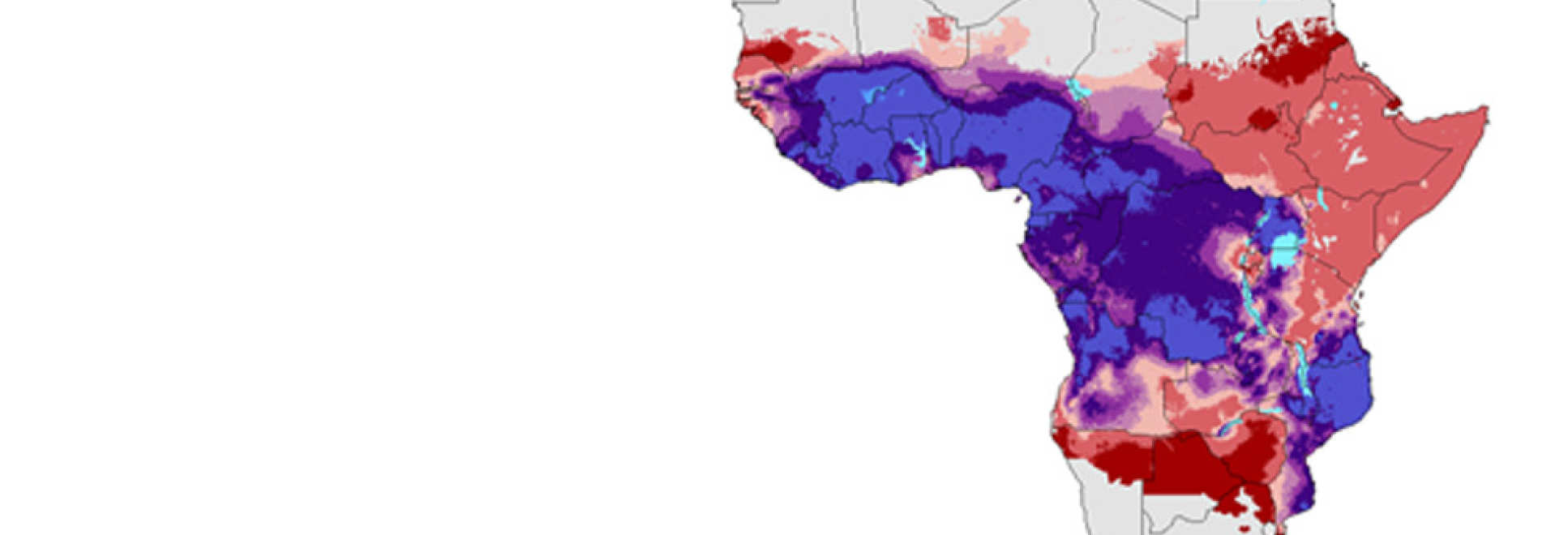
Project information
A core aspect of our research involves the use of mathematical models to guide the broader strategic direction behind worldwide elimination as well as to inform national and local policy in countries aiming to eliminate malaria. Thus, a major focus of our research involves the continual update and development of models to capture malaria epidemiology and interventions.
A focus of our research is the development of temporally dynamic and geographically-explicit models for Plasmodium falciparum malaria transmission and control capable of answering the strategic and policy-relevant questions that are likely to arise under an eradication strategy. This includes development of appropriate models for the acquisition and loss of immunity to severe disease, clinical disease and parasites in the human population, further understanding of the persistence of vector populations through the dry season, and integration of these models with weather-driven vector dynamics. We link the epidemiology with modelling of current and new malaria interventions and treatment to capture the impact of different control strategies.
A key methodological challenge is to fit the range of non-linear relationships between malaria metrics to capture the geographic heterogeneity in transmission and how this is changing as interventions are scaled up. We use Bayesian MCMC methods to fit the models to cross-sectional and longitudinal data from a wide range of settings including data from population-based surveys and routine health information systems and antenatal care-based surveillance.
In parallel, we collaborate with Institut Pasteur to develop models to capture the transmission of Plasmodium vivax, capturing differences in the biology and epidemiology of this parasite with a particular focus on the role of relapse infections in sustaining transmission. These mathematical models are being used to evaluate the potential effects on malaria control and elimination efforts of scaling up coverage with P. vivax specific interventions such as treatment with primaquine or tafenoquine.
Recent publications
Sherrard-Smith E, Winskill P, Hamlet A, Ngufor C, N'Guessan R, Guelbeogo MW, Sanou A, Nash RK, Hill A, Russell EL, Woodbridge M, Tungu P, Kont MD, McLean T, Fornadel C, Richardson JH, Donnelly MJ, Staedke SG, Gonahasa S, Protopopoff N, Rowland M, Churcher TSet al., 2022, Optimising the deployment of vector control tools against malaria: a data-informed modelling study, The Lancet Planetary Health, Vol: 6, Pages: e100-e109, ISSN: 2542-5196
Hogan AB, Winskill P, Ghani AC. Estimated impact of RTS,S/AS01 malaria vaccine allocation strategies in sub-Saharan Africa: A modelling study. PLoS Med. 2020; 1–19. doi:10.1371/journal.pmed.1003377
White MT, Walker P, Karl S, Hetzel MW, Freeman T, Waltmann A, et al. Mathematical modelling of the impact of expanding levels of malaria control interventions on Plasmodium vivax. Nat Commun. 2018;9: 3300. doi:10.1038/s41467-018-05860-8
Winskill P, Slater HC, Griffin JT, Ghani AC, Walker PGT (2017). The US President’s Malaria Initiative, Plasmodium falciparum transmission and mortality: a modelling study, PLoS Medicine 14(11):e1002448.
Griffin JT, Bhatt S, Sinka ME, Gethin PW, Lynch M, Patouillard E, Shutes E, Newman RD, Alonso P, Cibulskis RE, Ghani AC (2016). Potential for reduction of burden and local elimination of malaria by reducing Plasmodium falciparum malaria transmission: a mathematical modelling study, Lancet Infectious Diseases 16(4): 465-72.